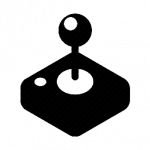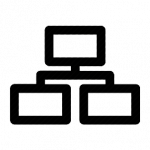Incompatibility between 8bit era computers has been a problem for game developpers then and now. Platforms used various CPUs (6502, 6809, Z80), graphic chips (VIC2, ANTIC, DHR), sound chips (SID, POKEY, MockingBoard)… and implemented wildly different bitmap schemes, hardware sprites (or lack of), memory maps, and so on.
8bit-Unity takes the complexity out of retro-game development, by offering a simple API with which you can write your game only once without worrying about specifics of the target systems, with a comprehensive feature-set as listed below.
 |
Cross-Platform Write the game once and deploy to Apple//, Atari 8bit, C64, Lynx, NES/Famicom, Oric (more platforms to be added in future!) |
 |
Bitmaps Compose menus and playing fields as 320x200x256 PNG files, then automatically convert and package on your game DISK (see below) |
 |
Printing/Drawing Draw pixels and print strings over the bitmap (40×20 chars) in any paper/ink colour combination |
| Sprites Compose sprite sheets as PNG files, then automatically convert and package with your game binary file |
|
 |
Joysticks Read the state of up-to 2 joysticks (up-to 4 on the C64 with the iComp card) |
 |
SFX Generate generic sound effects (engine noise, explosions…) |
 |
Music Playback music files (Duet, RMT, SID, Chipper, FamiTone, MYM) |
 |
Networking Use UDP/TCP/URL over the internet with supported devices: 8bit-Hub (all platforms), Uthernet (Apple//), DragonCart and Fujinet (Atari 8bit), RR-Net and Ultimate 64/II (C64). |
 |
Disk Packaging Automatically compile and package the game with assets onto “ready-to-download” game disks |
